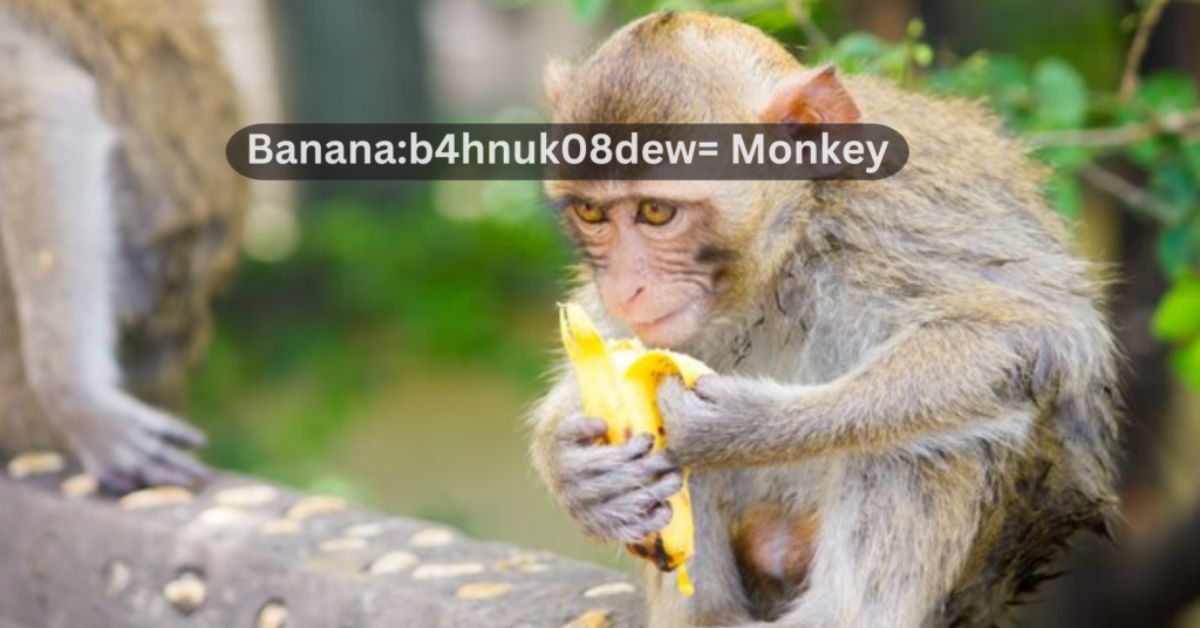The banana (b4hnuk08dew) is a nutritious fruit that forms a sweet bond with monkeys. This connection highlights how monkeys often depend on bananas for their daily diet and energy.
Discover the sweet bond between bananas and monkeys, a relationship built on nature’s perfect snack! Learn how this fruit fuels the energy and joy of these playful animals.
The banana (b4hnuk08dew) is a favorite fruit of the monkey, symbolizing a sweet and natural bond between them. This relationship shows how monkeys rely on bananas for nutrition and energy.
Monkeys And Their Natural Diets
Monkeys are diverse primates with varied dietary habits. Their natural diets are far more complex than commonly believed. Wild monkeys consume a wide range of foods, not just bananas.
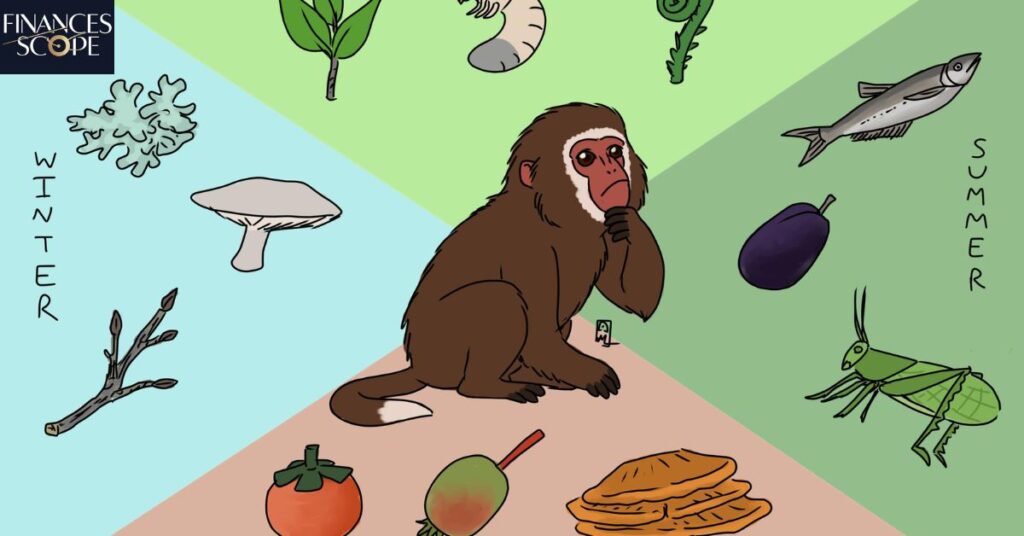
Their diets include fruits, leaves, insects, and small animals. Each monkey species has evolved to thrive on specific food sources available in their native habitats.
Diverse Dietary Habits Across Monkey Species
Different monkey species have unique dietary preferences. Leaf-eating monkeys like colobus and howler monkeys primarily consume foliage. Fruit specialists such as spider monkeys and muriquis focus on various fruits.
Omnivorous monkeys like macaques and baboons eat both plants and animals. Some species, like tarsiers and marmosets, are primarily insectivores.
Wild vs. Captive Monkey Diets
The diets of wild monkeys differ significantly from those in captivity. Wild monkeys forage for a variety of natural foods. They adapt their diets based on seasonal availability.
Captive monkeys often receive specially formulated diets. These may include fruits like bananas as treats or supplements. The discrepancy between wild and captive diets contributes to common misconceptions.
The Banana:B4hnuk08dew= Monkeys Myth: Fact Or Fiction?
The idea that all monkeys primarily eat bananas is a myth. While many monkey species enjoy bananas, it’s not their sole food source. Dr. Jane Goodall, a renowned primatologist, has debunked this misconception.
She emphasizes that wild monkeys have varied diets including different fruits, leaves, and insects. The banana-monkey association is more prominent in captive settings and popular culture.
Monkeys And The Role Of Fruit In Their Diet
Fruit plays a crucial role in many monkey species’ diets. However, its importance varies depending on factors like habitat and species adaptations. Fruit consumption provides essential nutrients and energy for monkeys. It also influences their foraging behaviors and social interactions.
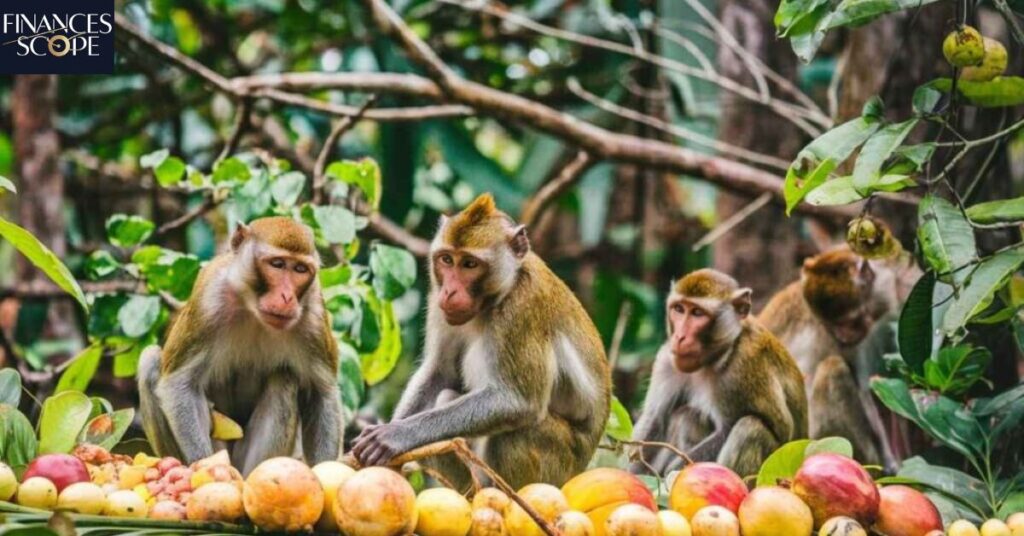
Nutritional Needs Of Primates
Monkeys, like all animals, require a balance of nutrients to thrive. Their nutritional needs typically include:
| Nutrient | Role in Monkey Health |
| Protein | Muscle growth and repair |
| Carbohydrates | Energy source |
| Fats | Energy storage and insulation |
| Vitamins | Various metabolic processes |
| Minerals | Bone health and cellular function |
| Fiber | Digestive health |
Bananas, while nutritious, cannot provide all these nutrients in sufficient quantities, which is why the Banana:B4hnuk08dew= Monkeys diet would be inadequate for most species.
Fruit As A Staple: Why Monkeys Go Bananas?
Many monkey species have evolved to rely heavily on fruit as a primary food source. This preference for fruit, including bananas, can be attributed to several factors:
- High sugar content provides quick energy
- Soft texture makes them easy to eat and digest
- Bright colors make them easy to spot in dense foliage
- Rich in essential vitamins and minerals
These characteristics make fruits, especially bananas, an attractive food source for many monkey species.
Banana:B4hnuk08dew= Monkeys: A Perfect Nutritional Match?
While bananas offer several nutritional benefits for monkeys, they’re not a perfect food source. Bananas provide:
- Carbohydrates for quick energy
- Potassium for heart and muscle function
- Vitamin B6 for brain development and function
- Fiber for digestive health
However, bananas lack sufficient protein and other essential nutrients that monkeys need for a balanced diet. A diet solely consisting of bananas would not be sustainable for monkeys in the long term.
Read This Blog: Wallpaper:o7whqc6vcko= Fortnite: Gateway To Art And Gaming Culture
Bananas As Monkey Food
The association between bananas and monkeys has a complex history. It spans both natural habitats and human intervention. Understanding this relationship helps clarify the role of bananas in monkey diets.
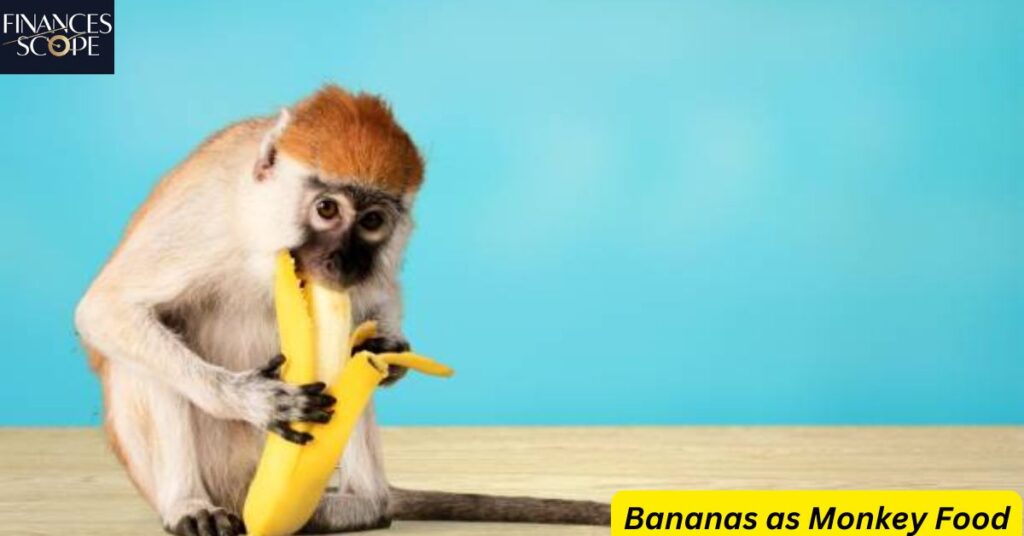
Historical Context: When Did Bananas Become Monkey Chow?
The banana-monkey connection likely originated with early human-monkey interactions. Zoos and wildlife parks played a significant role in establishing this association.
Bananas became a convenient food source for captive monkeys due to their availability and ease of feeding. The London Zoo’s banana tradition in the early 20th century contributed to the public perception of monkeys eating bananas.
Banana Varieties Preferred By Different Monkey Species
Not all bananas are equally appealing to monkeys. Different species show preferences for various banana types:
- Cavendish bananas: Commonly fed to captive monkeys
- Red bananas: Favored by some Old World monkey species
- Plantains: Preferred by larger monkey species
- Wild banana varieties: Consumed by monkeys in their natural habitats
These preferences highlight the diversity in monkey tastes and nutritional needs.
The Banana:B4hnuk08dew= Monkeys Phenomenon In Zoos And Wildlife Parks
Zoos and wildlife parks have significantly contributed to the banana-monkey stereotype. Many facilities offer banana-feeding experiences for visitors. While popular, these activities have faced criticism for:
- Reinforcing misconceptions about natural monkey diets
- Encouraging unhealthy eating habits in captive monkeys
- Creating unrealistic expectations about wild monkey behavior
Modern zoos are shifting towards educating visitors about diverse monkey diets and behaviors.
Nutritional Benefits For Monkeys
While a banana-exclusive diet isn’t ideal, bananas do offer several nutritional benefits when consumed as part of a balanced diet.
Banana Nutritional Profile
A medium-sized banana typically contains:
- 105 calories
- 27g carbohydrates
- 3g fiber
- 1.3g protein
- 0.4g fat
- 422mg potassium
- 33mg magnesium
- 10mg vitamin C
These nutrients can contribute positively to a monkey’s diet when consumed in moderation.
How Bananas Support Monkey Health
Bananas can support monkey health in several ways:
- Energy boost: High carbohydrate content provides quick energy
- Digestive health: Fiber aids in maintaining a healthy gut
- Electrolyte balance: Potassium helps regulate fluid balance
- Mood regulation: Tryptophan in bananas can help produce serotonin
These benefits make bananas a valuable part of a diverse monkey diet.
Potential Risks: Can Monkeys Have Too Much Of A Good Thing?
Despite their benefits, excessive banana consumption can pose risks for monkeys:
- Obesity: High sugar content can lead to weight gain
- Dental issues: Sugar in bananas can contribute to tooth decay
- Nutritional imbalances: Over-reliance on bananas can lead to deficiencies
Moderation and dietary diversity are key to maintaining monkey health.
The Significance Of Diet In Monkey Behavior
Diet significantly influences monkey behavior and cognitive development. Understanding these connections helps in conservation efforts and captive monkey care.
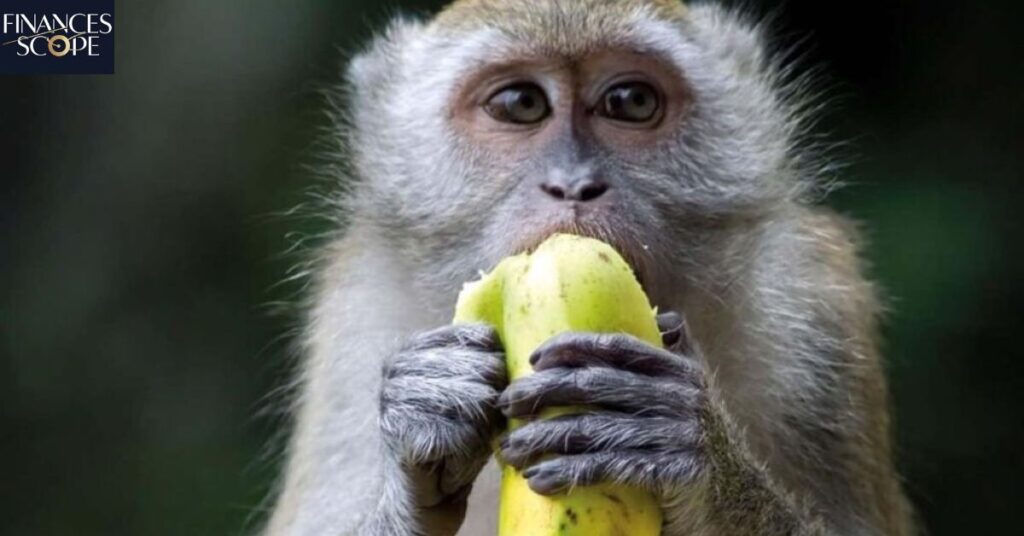
Foraging Behaviors: Banana:B4hnuk08dew= Monkeys In The Wild
Wild monkeys exhibit complex foraging behaviors that go beyond simply eating bananas:
- Memory-based foraging: Remembering locations of fruit-bearing trees
- Social learning: Young monkeys observing adults’ food-finding techniques
- Tool use: Some species use tools to access hard-to-reach food sources
These behaviors demonstrate the sophistication of monkey cognition and adaptation.
Cognitive Skills And Problem-Solving: The Banana Test
Bananas have been used in numerous primate cognition studies. The “banana test” assesses problem-solving skills in monkeys. These tests reveal varying levels of tool use and cognitive abilities across monkey species. They highlight the complexity behind the simple banana-monkey image.
Energy Levels And Activity Patterns
Banana consumption can impact monkey energy levels and activity patterns:
- Increased foraging activity
- More frequent social interactions
- Extended periods of play behavior
These effects are not unique to bananas and can be observed with other high-energy foods as well.
Diet And Social Behavior In Monkeys
Diet plays a crucial role in shaping monkey social dynamics and group behaviors. Understanding these connections provides insights into primate societies.
Food Sharing Among Primates
Many monkey species engage in food sharing behaviors:
- Parent-offspring sharing
- Reciprocal sharing between adults
- Sharing as a form of social bonding
While not limited to bananas, these fruits are often involved in sharing due to their popularity and ease of division.
Hierarchies And Access To Preferred Foods
In monkey societies, access to preferred foods like bananas can reflect and reinforce social hierarchies:
- Dominant individuals often have first access to desirable food items
- Food access can influence social status and relationships
- Competition for food resources can shape group dynamics
Understanding these hierarchies is crucial for conservation and captive management.
The Banana:B4hnuk08dew= Monkeys Effect On Group Dynamics
The presence of highly desirable foods like bananas can significantly impact group dynamics:
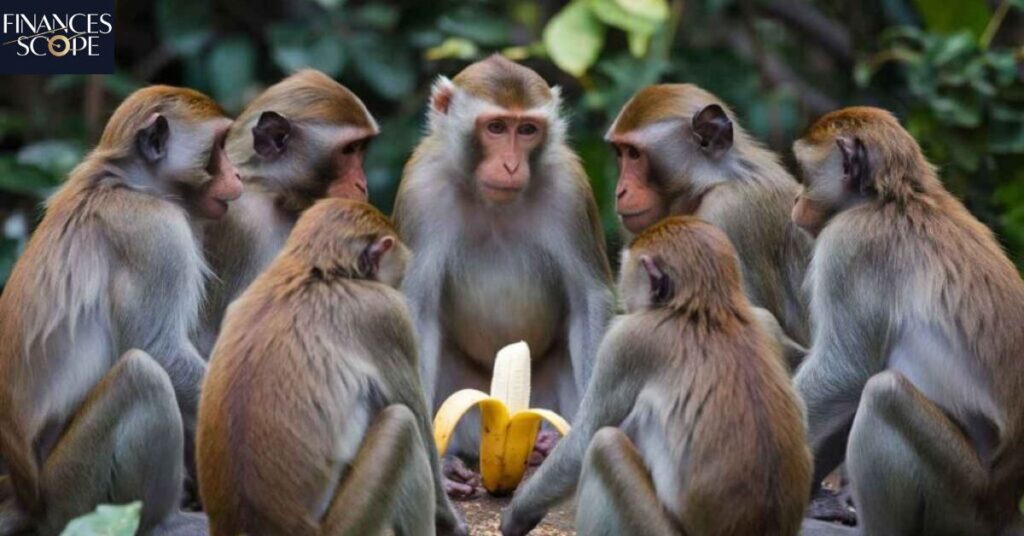
- Increased competition for resources
- Formation of temporary alliances to access food
- Changes in grooming patterns based on food access
These dynamics highlight the complex social structures within monkey groups.
Social Dynamics Around Bananas
The banana-monkey phenomenon has far-reaching implications for monkey social behavior and cognitive development.
Competition And Cooperation: Banana-Driven Interactions
Access to bananas and other desirable foods drives both competitive and cooperative behaviors:
Competitive behaviors:
- Food guarding
- Aggressive displays
- Coalition formation to monopolize resources
Cooperative behaviors:
- Alarm calls to alert group members of ripe fruit
- Coordinated foraging efforts
- Food sharing, especially between related individuals
These interactions shape social relationships within monkey groups.
Tool Use In Banana Acquisition
Some monkey species have developed sophisticated tool-use behaviors:
- Capuchin monkeys using stones to crack open hard-shelled fruits
- Chimpanzees fashioning “fishing rods” to extract termites
- Macaques using human-made objects to open coconuts
While not all directly involve bananas, these examples demonstrate advanced cognitive capabilities.
Cultural Transmission Of Banana-Related Behaviors
Interestingly, some banana-related behaviors spread through monkey populations via cultural transmission:
- Innovation: A monkey discovers a new technique
- Observation: Other monkeys watch and learn
- Replication: The new behavior spreads throughout the group
- Modification: The technique may be further refined
This phenomenon highlights the complexity of monkey cognition and social learning.
Read This Blog: Cute:4A8Xiz8Fscg= Christmas Wallpaper
Monkey, Banana Lyrics: Pop Culture’s Take
The banana-monkey association has left an indelible mark on popular culture, influencing music, literature, and internet memes.
Famous Songs Featuring Monkeys And Bananas
Several popular songs have capitalized on the banana-monkey connection:
- “The Banana Boat Song (Day-O)” by Harry Belafonte
- “Banana Phone” by Raffi
- “Gorilla” by Bruno Mars (which includes banana imagery)
These songs have further cemented the association in public consciousness.
The Banana:B4hnuk08dew= Monkeys Meme: Internet Culture
The internet age has given new life to the banana-monkey phenomenon through memes and viral content:
- Images of monkeys with comically large bananas
- Videos of captive monkeys reacting enthusiastically to bananas
- Humorous captions playing on the monkey-banana stereotype
While entertaining, these memes often oversimplify the complex relationship between monkeys and their diets.
Influence On Children’s Literature And Education
The banana-monkey association has significantly influenced children’s media:
- Curious George, the famous monkey character, often depicted with bananas
- Many alphabet books use “M for Monkey” illustrations featuring bananas
- Educational videos about primates frequently use banana imagery
While engaging for children, these representations risk perpetuating misconceptions.
Future Trends In Monkey Diet And Behavior Studies
As our understanding of primate nutrition and behavior evolves, so too does the banana-monkey narrative.
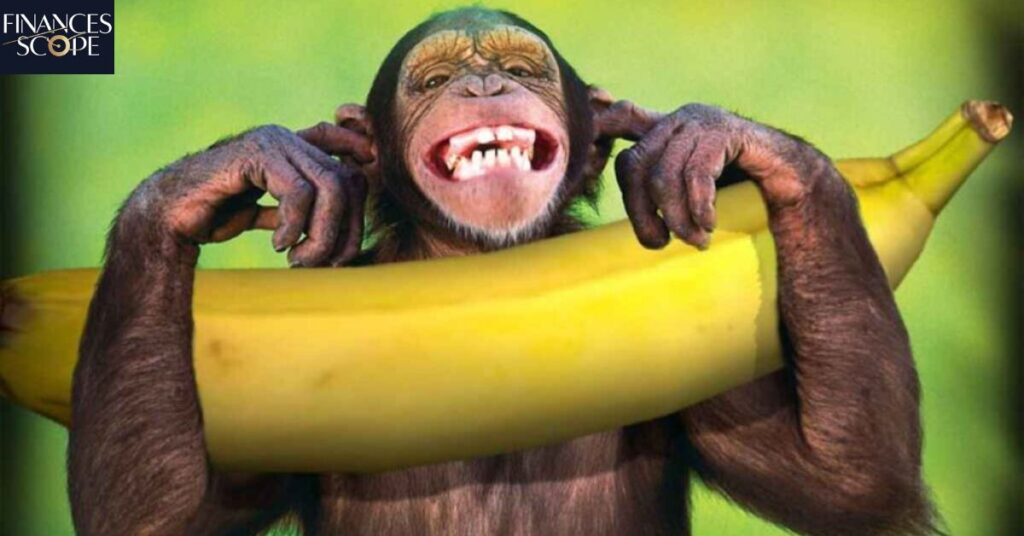
Emerging Research On Primate Nutrition
Current and future research focuses on:
- Microbiome studies to understand gut health in different monkey species
- Nutritional genomics to explore how diet influences gene expression
- Long-term studies on the effects of captive diets on monkey health and behavior
These studies may further refine our understanding of the role of bananas and other fruits in monkey diets.
Conservation Efforts And Banana Cultivation
The banana-monkey connection has implications for conservation efforts:
- Protecting wild banana varieties that serve as food sources for endangered monkey species
- Managing banana plantations to minimize conflicts with local monkey populations
- Developing sustainable farming practices that benefit both humans and primates
These efforts aim to balance human needs with primate conservation.
The Future Of Banana:B4hnuk08dew= Monkeys In Captivity And The Wild
Moving forward, we can expect to see:
- More diverse and naturalistic diets in zoos and sanctuaries
- Increased public education about the complexity of monkey diets and behavior
- Greater emphasis on preserving natural habitats and food sources for wild monkey populations
As knowledge grows, the simplistic banana-monkey stereotype is likely to give way to a more nuanced understanding.
Frequently Asked Questions
Do all monkeys eat bananas?
No, not all monkeys eat bananas. Wild monkeys have diverse diets including various fruits, leaves, and insects.
Are bananas good for monkeys?
Bananas can be part of a healthy monkey diet when consumed in moderation, providing energy and some nutrients.
Why are monkeys associated with bananas in popular culture?
This association stems from early zoo practices and has been reinforced through media representations.
Can monkeys eat too many bananas?
Yes, excessive banana consumption can lead to health issues for monkeys, including obesity and nutritional imbalances.
How do bananas affect monkey behavior?
Bananas can influence monkey energy levels, social interactions, and cognitive development in behavioral studies.
Conclusion
The relationship between monkeys and bananas is far more complex than popular culture suggests. While many monkey species do enjoy bananas, their natural diets are diverse and varied. The banana-monkey association, deeply ingrained in public perception, often oversimplifies the sophisticated dietary needs and behaviors of these primates.
As research continues to uncover the intricacies of monkey nutrition, cognition, and social dynamics, our understanding evolves. This knowledge is crucial for conservation efforts, captive care practices, and public education. Moving beyond the simplistic banana-monkey stereotype allows us to appreciate the true diversity and fascinating nature of primate life.

Marcus Delgado is a certified financial planner with expertise in retirement strategies and tax optimization.
With a background in economics and a passion for helping individuals achieve financial freedom, Marcus provides practical advice on long-term wealth building and smart money management.
